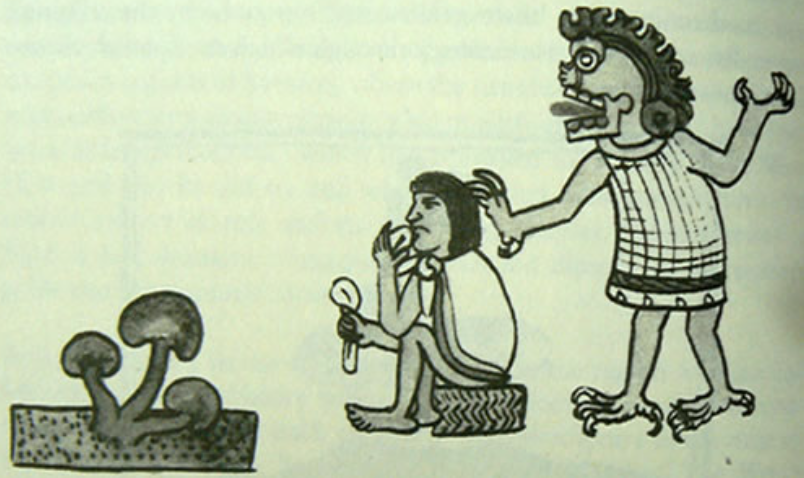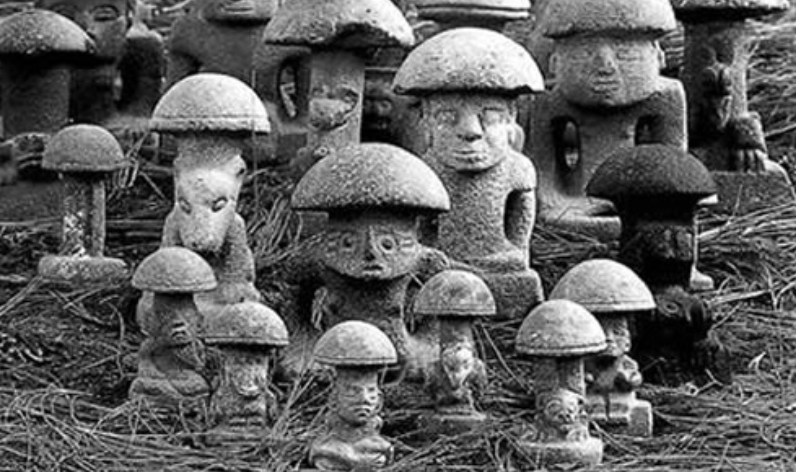Mexico's Psychedelic Legacy of Indigenous Wisdom
- Paulina Alanis

- Sep 4, 2023
- 3 min read
Mexico's rich cultural tapestry is interwoven with the fascinating history of psychedelic substances. From the ancient indigenous communities that thrived on its soil to the present day, Mexico has been a cradle of psychedelic exploration. These mind-altering substances have played a significant role in indigenous rituals, healing ceremonies, and spiritual practices for thousands of years, creating a unique and enduring connection between Mexico and psychedelics.
Long before the term "psychedelic" entered the global lexicon, indigenous Mexican cultures had already embraced the profound potential of these substances. The Maya, Olmec, Zapotec, and Aztec communities, among others, were pioneers in utilizing plant medicines like peyote, psilocybin mushrooms, ololiuhqui, tobacco, sinicuichi and cacao for their rituals and spiritual ceremonies.
Mexico's profound history with psychedelic substances is not only steeped in indigenous traditions but also intertwined with the accounts of early Spanish explorers and the groundbreaking research of individuals like Richard Evans Schultes. These accounts provide a unique glimpse into the ritual and medicinal use of psychoactive mushrooms in Meso-America during a crucial period in history.
Spanish priests and explorers who encountered indigenous cultures during the early colonialism period left in written accounts their understanding of the ritual and medicinal use of psilocybin mushrooms.In 1656, Francisco Hernández de Toledo, a physician serving the King of Spain, compiled a guide for missionaries heading to the New World. In this guide, he described various mushrooms consumed by the native populations, some of which were known to induce a kind of "madness," bringing forth vivid hallucinations, wars, and encounters with demons.
One of the most tragic consequences of the colonial period was the suppression of the rich and diverse spiritual rituals practiced by indigenous groups across Mexico. Indigenous spiritual leaders, often called shamans or medicine men and women, were persecuted and sometimes executed by colonial authorities who saw them as threats to the spread of Christianity. The colonial authorities forced the indigenous people into cultural assimilation, pressuring them to adopt European clothing, customs, and religious practices.
Despite centuries of suppression and cultural trauma, many indigenous communities in Mexico managed to preserve fragments of their traditional spiritual practices. In some cases, these practices went underground, continuing in secret. Others were adapted to blend with Christian elements to avoid persecution, resulting in syncretic belief systems that are still practiced today.
In the late 1930s a young Harvard botanist named Richard Evans Schultes embarked on a groundbreaking journey to Oaxaca, Mexico. Schultes conducted pioneering research on the shamanistic use of mushrooms by indigenous communities in the region. His work not only validated the historical accounts of Spanish chronicles but also expanded our understanding of the intricate relationships between plants, fungi, and indigenous cultures.
Among the myriad of psychedelic experiences in Mexico's history, the Maya's use of balché stands out. Balché was a potent mixture of honey and extracts of peyote, a small, spineless cactus containing the psychoactive compound mescaline. The Maya would partake in group ceremonies, imbibing balché to attain intoxication. This communal approach to psychedelics underscores their profound connection to social and spiritual experiences.
Peyote, also known as Lophophora williamsii, has a storied history in Mexican indigenous cultures. It contains mescaline, a powerful psychedelic compound that induces altered states of consciousness. Various indigenous communities, including the Olmec, Zapotec, and Aztec, held peyote in high esteem for its spiritual and healing properties. Peyote rituals continue to this day among certain indigenous groups in Mexico, highlighting the enduring significance of this cactus.
The use of mushrooms particularly those containing psilocybin, aztecorum and psilocybe mexicana, were employed by indigenous communities for their entheogenic qualities. These mushrooms were used in healing rituals and religious ceremonies, offering participants profound spiritual insights.
In addition to mushrooms, the seeds of ololiuhqui (Turbina corymbosa) were used by various indigenous groups, including the Aztec, for their psychoactive properties. These seeds contain lysergic acid amide (LSA), a substance similar in effect to LSD. The indigenous people would grind the seeds and consume them, opening the door to altered states of consciousness and spiritual revelation.
Today, Mexico's connection with psychedelics remains robust and deeply ingrained in its culture. While the Western world has only recently started to rediscover the potential therapeutic benefits of these substances, Mexico's indigenous communities have been carrying the torch for millennia. This cultural continuity provides a unique perspective on the responsible and respectful use of psychedelics, emphasizing their importance not only for individual healing but also for the collective consciousness.
Mexico's history with psychedelics is a testament to the profound relationship between indigenous cultures and the natural world. From the Maya's communal balché ceremonies to the Aztec's exploration of peyote, mushrooms, and ololiuhqui seeds, these substances have been an integral part of Mexico's spiritual and healing practices. As the world continues to explore the therapeutic and transformative potential of psychedelics, we must remember and respect the rich history that precedes us, a history that continues to shape Mexico's vibrant cultural landscape.














Commentaires